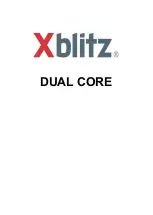
11
10
The exposure mode dial of the Nikon F55/F55D can be divided into two
sections. One is the user-controlled exposure mode with Auto-Multi Program,
Shutter-Priority Auto, Aperture-Priority Auto or Manual exposure modes,
where the photographer can determine various exposure factors. The other
section is point-and-shoot exposure mode in which the camera automatically
controls various exposure settings. See pages 28, 37-39, 54-62 for more
details on each exposure mode.
Available Exposure Modes
•
User-controlled exposure mode
•
Point-and-shoot exposure mode
P
: Auto-Multi Program (P. 54)
Camera controls shutter speed and aperture
automatically. Other settings, such as Flexible
Program (page 55) or Exposure Compensation
(page 64) are possible.
S
: Shutter-Priority Auto (P. 56)
You set desired shutter speed, and the camera
selects the correct aperture. Freeze the motion
of a moving subject or blur the subject.
A
: Aperture-Priority Auto (P. 58)
You set the desired aperture, and the camera
selects the correct shutter speed. Lets you
determine depth of the in-focus area.
M
: Manual (P. 60)
Shutter speed and aperture are set manually.
Suitable for taking photographs with unique
effects.
a
: AUTO mode (P. 28)
Camera automatically controls all the exposure
settings. Suitable for taking pictures right away.
s
: Portrait mode (P. 37)
Use this mode to take portraits. The background
is blurred to accentuate your main subject.
d
: Landscape mode (P. 37)
Use this mode to take pictures of distant daytime
or nighttime scenes. The overall landscape will
be sharply focused.
f
: Close-Up mode (P. 38)
Use this mode to take up-close pictures of
subjects such as flowers or insects.
g
: Sports Continuous mode (P. 38)
Use this mode to freeze the motion of fast-
moving subjects. Continuous shooting is also
possible with this mode.
h
: Night Portrait mode (P. 39)
Use this mode for subjects with an evening or
night background.
BEFORE Y
OU BEGIN
F55 (E) 03.4.15 7:51 PM Page 10






































